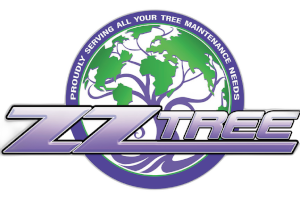The ambrosia beetle (Xyleborus affinis) is a widespread invasive species posing a significant threat to Northern Virginia trees, causing extensive damage and in some cases leading to their demise. Though this pest is pervasive and ubiquitous throughout the Eastern United States, combatting its spread is possible.
This article will explore this beetle species’ impact on Central and Northern Virginia trees by examining the following:
- The life history of the invasive ambrosia beetle
- How the ambrosia beetle damages trees
- Methods used to combat ambrosia beetles
- Tree recovery after an ambrosia beetle attack
Key Takeaways
- Ambrosia beetles pose a significant threat to trees in Northern Virginia.
- Early detection and prompt intervention are crucial for effective control of infestations.
- Regular inspection and removal of infested material is recommended to prevent further damage.
- Maintaining tree health through proper care, nutrition, and collaboration between professionals and homeowners is essential in the fight against ambrosia beetles.

The ambrosia beetle (Xyleborus affinis) is known for its close association with several species of the ambrosia fungus.
What are Ambrosia Beetles?
X. affinis are small wood-boring insects and are the most common species of this invasive beetle pest. Belonging to the entomological subfamily Scolytinae (family Curculionidae), they are best known for their symbiotic relationship with ambrosia fungi.
These beetles are found in Virginia and other states from New Jersey to Texas, and they are aptly named for polyphyletic genera of fungi (Ambrosiella, Rafaellea, and Dryadomyces) that they cultivate and feed upon. X. affinis can cause significant damage to trees as they bore into the wood to create galleries for fungal cultivation. The fungi serve as a primary food source for the beetle larvae, providing them with necessary nutrients to the detriment of the host tree.
In Central and Northern Virginia, the presence of ambrosia beetles has become a concern for tree health and maintenance. The damage caused by ambrosia beetles can weaken the structural integrity of trees, making them more susceptible to further infestations and diseases. Consequently, professional tree removal services have become essential in combating and managing the spread of these pests.
To mitigate the impact of ambrosia beetles, it is crucial to understand their life cycle and behavior. These beetles typically colonize stressed or injured trees, attracted by the volatile organic compounds released by damaged wood. However, they also attack healthy trees in the US due to the native trees’ lack of natural defenses.
The infestation cycle begins as the female beetles bore into the tree bark, leaving their signature “toothpick” shaped frass protruding for the entrance holes and creating galleries (tunneled chambers), laying their eggs, and introducing ambrosia fungi they carry in their mandibles. The larvae hatch from eggs and feed on the fungi as they develop before pupating within the tree and eventually emerging as adult beetles to continue the cycle, further damaging the tree in the process.

Ambrosia beetles begin their infestation by tunnelling into trees as shown in the cross section. Photo used courtesy of James Solomon, USDA Forest Service, Bugwood.org
How Ambrosia Beetles Damage Trees
The damage caused by ambrosia beetles to trees in Northern Virginia is a significant concern in the region. These beetles can cause extensive damage to various tree species, leading to reduced tree health and increased mortality risk, and understanding how these beetles damage trees is crucial for effective management and control strategies.
- Tunneling: Ambrosia beetles bore into the bark of trees, creating tunnels in the wood. These tunnels can disrupt the flow of water and nutrients within the tree, leading to wilting, yellowing leaves, and eventual tree death.
- Fungal Infestation: As ambrosia beetles burrow into trees, they introduce fungal spores into the tunnels. These spores grow and multiply, forming a fungal network known as mycelium. The mycelium grows and blocks the xylem, rendering the tree unable to transport fluids, further weakening the tree’s structure and compromising its overall health.
- Galleries: Ambrosia beetles create galleries within the tree, essentially chambers where they lay their eggs and rear their young. These galleries cause additional physical damage to the tree, further hindering its ability to transport water and nutrients.
- Secondary Infections: The wounds created by ambrosia beetles provide entry points for secondary pathogens, such as bacteria and fungi. These pathogens can invade the tree, causing additional damage and potentially leading to the death of the tree.
How Can Ambrosia Beetles Be Combatted
One effective approach to combatting the damage caused by ambrosia beetles is through the implementation of integrated pest management strategies that focus on monitoring, early detection, and appropriate control measures. Integrated pest management (IPM) is a systematic and sustainable approach that combines various pest control methods to minimize the use of chemical pesticides while effectively managing pest populations.
In the case of ambrosia beetles, the first step is to establish a monitoring program to detect their presence and assess the extent of infestation. Monitoring involves regular inspections of trees using traps or visual surveys to identify signs of ambrosia beetle activity, such as the presence of boring dust, frass, or wilted foliage. Early detection is crucial as it allows for timely intervention before the population grows and causes significant damage to the trees.
Once an infestation is confirmed, appropriate control measures can be implemented. Control measures for ambrosia beetles may vary depending on the severity of infestation and the specific beetle species present. Non-chemical methods such as removing infested trees or branches can be effective in preventing the spread of beetles to healthy trees. Additionally, pruning and disposing of infested material, including tree stumps, can help reduce beetle populations.
However, in cases where chemical intervention is necessary, insecticides specifically labeled for ambrosia beetles can be applied to the tree trunk or branches. Pesticides should be applied by a tree service professional as it’s essential to follow all safety guidelines and label instructions when using chemical interventions to minimize environmental impact and ensure their effectiveness.
Efforts to combat ambrosia beetles in Central and Northern Virginia involve a combination of preventive measures, early detection, and prompt intervention.
Proper tree care and maintenance, including pruning and removal of dead or damaged branches, can help reduce the attractiveness of trees to these pests. When an advanced infestation is detected, however, it’s recommended that the trees be removed and burned prior to emergence to protect healthy trees and reduce the beetles’ numbers.
Regular monitoring and inspection of trees can aid in identifying infestations early on, allowing for targeted treatment and control measures.
Implementing IPM strategies that emphasize monitoring, early detection, and appropriate control measures is an effective approach to combatting the damage caused by ambrosia beetles. By utilizing a combination of non-chemical and chemical methods, it is possible to manage and reduce the impact of these destructive pests on trees in Central and Northern Virginia.

The effects of a severe ambrosia beetle infestation include wilting and browing of the canopy. Photo used courtesy of Albert (Bud) Mayfield, USDA Forest Service, Bugwood.org
Can Trees Be Saved from an Ambrosia Beetle Infestation?
Trees affected by an infestation of ambrosia beetles have the potential for survival through the implementation of appropriate control measures and the removal of infested material. Ambrosia beetles are known to attack over 200 hardwood and coniferous tree species, including:
- Aspen (Populus spp.)
- Beech (Fagus sylvatica)
- Cherry (Prunus avium)
- Chinese elm (Ulmus parvifolia)
- Crape myrtle (Lagerstroemia indica)
- Dogwood (Cornus florida)
- Hickory (Carya spp.)
- Magnolia (Magnolia grandiflora)
- Maple (Acer spp.)
- Mimosa (Albizia julibrissin)
- Oak (Quercus spp.)
- Peach (Prunus persica)
- Redbud (Cercis canadensis)
- Sweetgum (Liquidambar styraciflua)
- Walnut (Juglans spp.)
One of the key control measures is the identification of infested trees. Early detection is crucial in preventing the spread of the beetles to other trees in the vicinity. Trees showing signs of infestation, such as frass or sap oozing from entry holes, should be closely monitored and promptly addressed. The removal of infested material is essential to disrupt the beetle’s life cycle and prevent further damage. Infested branches or sections of the tree should be pruned and destroyed to eliminate the beetles and prevent them from spreading to healthy trees.
In addition to physical control measures, chemical treatments can also be employed to combat ambrosia beetles. Insecticides can be applied either as preventive measures or curatively to infested trees. However, it is important to select insecticides that are specifically labeled for ambrosia beetle control and to follow the manufacturer’s instructions for application. Regular monitoring and reapplication may be necessary to ensure continued protection.
Proper tree care practices can contribute to the tree’s ability to withstand an ambrosia beetle infestation. Maintaining tree health through regular pruning, watering, and fertilization can strengthen the tree’s natural defenses and increase its chances of survival. Additionally, avoiding stress factors such as mechanical injuries or environmental stressors can reduce the tree’s susceptibility to beetle attacks.
While an ambrosia beetle infestation can pose a significant threat to trees, appropriate control measures and the removal of infested material can save affected trees. Early detection, prompt intervention, and a combination of physical and chemical control methods can help mitigate the damage caused by these beetles. By implementing these measures and maintaining tree health, it is possible to protect and preserve trees in the fight against ambrosia beetles in Northern Virginia.

Toothpick-like frass is a telltale sign of an ambrosia beetle infestation. Photo used courtesy of Laura Lazarus, North Carolina Division of Forest Resources, Bugwood.org
In Conclusion
Ambrosia beetles pose a significant threat to trees in Northern Virginia. These small insects bore into the wood, introducing a deadly fungus that weakens and kills the trees.
Although it is challenging to save trees once infested, early detection and prompt action can help minimize the damage caused by ambrosia beetles. Regular monitoring of trees for signs of infestation, such as sawdust-like frass or entry holes, can help identify and address the problem early on.
Ambrosia beetles pose a serious threat to trees in Northern Virginia. Vigilance and proactive measures, such as removing infested trees, applying insecticides, and implementing proper tree management practices, are crucial in the fight against these destructive pests. By taking these steps, the impact of ambrosia beetles can be minimized, helping to protect the trees in the region.
Though these invasive pests pose a significant problem in Northern and Central Virginia, they’re not unstoppable and can be controlled with a strategic plan and united effort.
Are Your Trees Threatened by Ambrosia Beetles or Another Pest?
Call the experts at ZZ Tree service today at 804-688-7099. Our professional team has the in-depth knowledge and training to effectively combat and control any insect pest or disease issue your trees are facing.
Proudly serving Central and Northern Virginia, including Winchester, Fredericksburg, Richmond, and Chester.

About ZZ Tree
We’re a 3rd generation tree care company with deep roots in the central and northern Virginia region providing the honest, knowledgeable service you deserve. We always offer straightforward pricing, free quotes, and the responsive, caring service you deserve from a quality tree care company.

